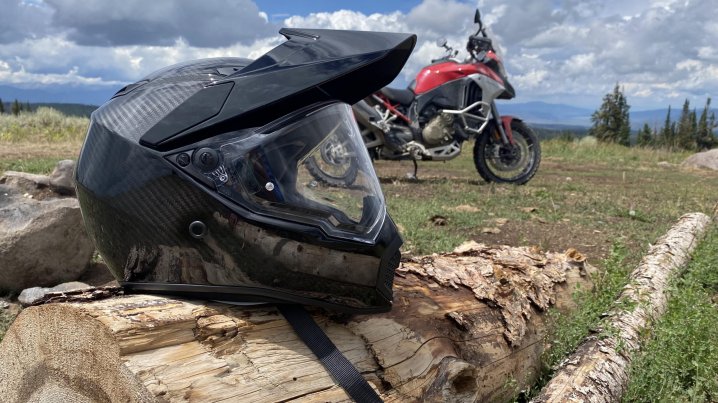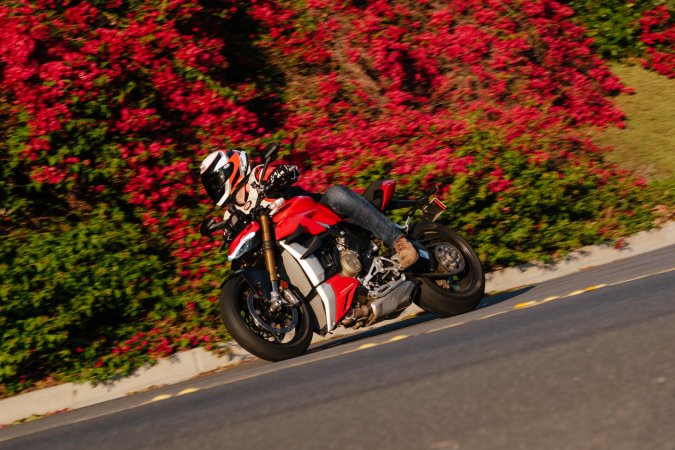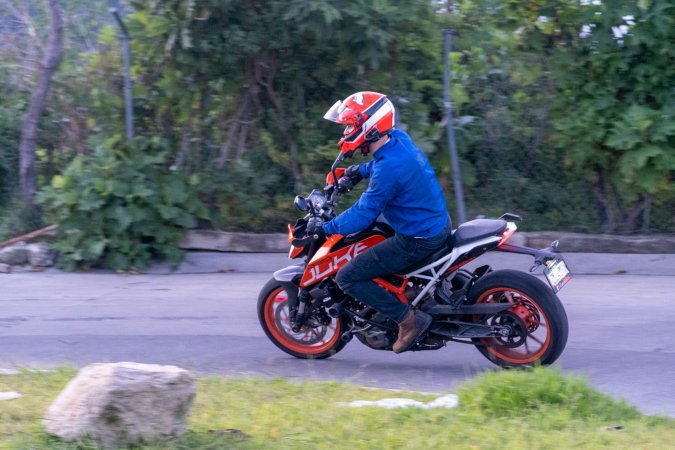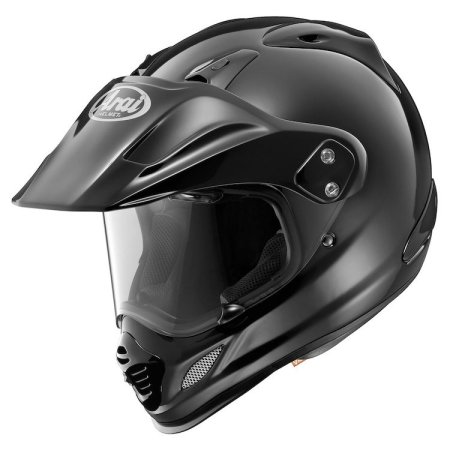We may earn revenue from the products available on this page and participate in affiliate programs. Learn more ›
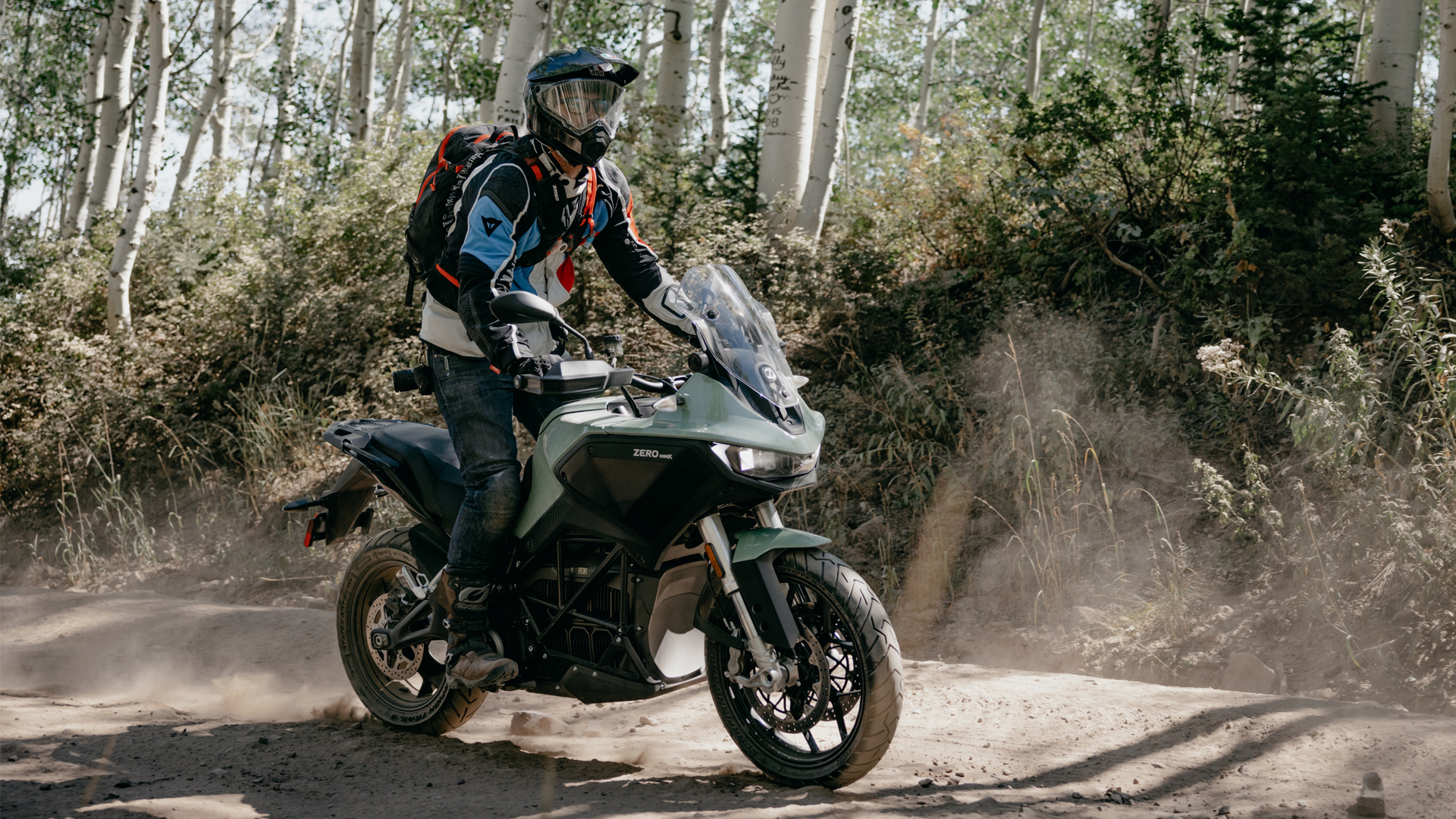
There’s a lot to be said about which motorcycle helmet is truly the best around, as there are different riding styles, different disciplines, and even different shaped heads. In fact, go to any motorcycle gear shop around and ask which helmet is the best, and you’re likely to get 17 different answers from the folks working behind the counter and those patrons walking around the store.
That, however, makes things difficult when you’re trying to buy your first helmet or looking for an upgrade. Luckily for you, I’m here with my 20 years of riding experience, and nearly 10 years of testing helmets for joints all over the internet. I’ve pooled my experience and my research into the buying guide below so that it cuts the bullshit and helps you get back out on two wheels. Let’s get into it.
Summary List
- Best Overall: Shoei X-14 Helmet
- Best Value: Icon Airflite Rubatone Helmet
- Best Dual Sport: AGV AX9
- Honorable Mention: Bell Qualifier Full-Face Motorcycle Helmet
- Honorable Mention: HJC CS-R3 Helmet
- Honorable Mention: Shoei RF-SR Helmet
- Honorable Mention: AGV K3 Helmet
- Honorable Mention: Arai XD-4 Helmet
- Best Modular: Scorpion EXO-AT950 Helmet
Our Methodology
For this buying guide, I actually had my hands on a lot of these helmets. And when I didn’t, I’ve had my hands on the brand’s other models. Plus, I used my two decades of writing and decade-plus of reviewing products to weed out the wheat from the chaff when I couldn’t get my hands on the helmets themselves.
When considering helmets, I looked at each manufacturer’s website to have accurate details about each helmet for shell sizing, internal shape, and included features. User reviews can be helpful in some cases, but they aren’t the end all, be all. I also enlisted The Drive’s Robert Bacon to assist with the AGV K3 review. I strive to stay true to our methodology by thoroughly researching each product or putting my hands on them before I suggest or recommend anything.
Best Motorcycle Helmet Reviews & Recommendations
Best Overall
Shoei X-14 Helmet
Pros
- Incredibly safe
- Lightweight
- Comfortable padding
- Multiple shields
Cons
- Air flow could be better
Best Value
Icon Airflite Rubatone Helmet
Pros
- Great value
- Stylish
- Good airflow
Cons
- Not as well-made as others in the segment
Best Dual Sport
AGV AX9
Pros
- Incredibly large field of view
- Light as hell
- Can take a beating
- Doesn’t get hot
Cons
- Can be noisy
- Larger shield to clean
Honorable Mention
Bell Qualifier Full-Face Motorcycle Helmet
Pros
- Bell Quality
- Affordable Price
- Clear and tinted visors
Cons
- High speed noise
Honorable Mention
HJC CS-R3 Motorcycle Helmet
Pros
- Moisture wickeing lining
- Comfort padding
- Inexpensive
Cons
- Takes a while to break in
Honorable Mention
Shoei RF-SR Helmet
Pros
- Shoei Quality
- Safety
- Multiple inner lining sizes for custom fit
Cons
- Shoei price
Honorable Mention
AGV K3 Helmet
Pros
- Inexpensive
- Easily washed
- Great air flow
Cons
- Might be loose around the cheeks
Honorable Mention
Arai XD-4 Helmet
Pros
- Arai name recognition
- Safety
- Peel-away inner paddings for custom fit
Cons
- Price
Modular
Scorpion EXO-AT950 Helmet
Pros
- Accomodates glasses
- Anti-fog is great
- Internal sun visor
Cons
- Heavy
Our Verdict on the Best Motorcycle Helmets
While my top pick is expensive, the Shoei X-Fourteen is the best on the market in my humble opinion. It’s lightweight, has good airflow, great colorways, and will stand up to whatever you throw at it. Including if you, unfortunately, hit the pavement. But there are other great helmets out there that aren’t as expensive as I outlined above. I just hope y’all will wear one, as they absolutely will save your life. As my old Shoei did for me.
What to Consider When Buying a Motorcycle Helmet
Before I get into it, you need to know that the best way to buy a new motorcycle helmet is to put it on first. This can be tough when online shopping offers so many more options than your local shop. Narrow down your online search by looking for the type of helmet you need for your riding style. Then narrow down your options to the manufacturers that make helmets that match your head shape. Your final step is to compare features and design to find the helmet with the right combination to match your taste and needs.
Types of Motorcycle Helmets
Full-Face Helmets
These are by far the best motorcycle helmets available in terms of protecting your head, face, chin, and neck from impact. They come in a variety of designs to suit riders of all types and you need to balance the characteristics to ensure you have a helmet suitable for your riding style. For example, sport bike owners can opt for a more aerodynamic design to keep their heads from popping up at high speeds. In contrast, helmets designed for cruisers are more focused on optimizing visibility.
Flip-Up Helmets
The distinguishing feature between a flip-up (or modular) and a full-face helmet is that the chin bar and shield are separate pieces that flips up via a hinge. This is great for putting on and taking off the helmet easily or having a quick chat with your friends at a red light. The downside is that the hinge can break on impact, leaving your face and neck exposed to the pavement. That’s not to suggest that these aren’t viable in terms of protection, simply that there’s a limit to how effective they’ll be and you’d not want to trust one if you regularly ride in high-risk situations.
Dirtbike Helmets
Specifically designed for off-road riding, these are the best full motorcycle helmets when it comes to durability. They are specifically designed to absorb tremendous impact while keeping the rider’s head stable. They aren’t the best choice for regular street riding because they aren’t exactly aerodynamic. It’s important to remember that they aren’t designed with high speeds in mind and using them in such situations can make them something of a risk to riders.
Motorcycle Helmet Key Features
Materials
Every motorcycle helmet has to pass certain quality standards to be sold, so there aren’t any ineffective materials used in their construction. However, there are some key differences in terms of the weight and strength of the materials used. The quality hierarchy of construction materials goes in this order: thermoplastic, fiberglass, composite, and carbon fiber/kevlar.
Inner Padding
Recommended motorcycle helmets have two layers of protection inside the helmet to keep your head from jostling around too much during an impact. The first layer is generally made of expanded polystyrene (EPS) that absorbs some of the kinetic energy that is transferred from a collision. The second layer is for comfort and can be made using suede, fabric, mesh, and other materials.
Shield
Shields keep your face clear of debris, bugs, etc., while riding. They come standard on full-face and flip-up helmets. They are available with a tint that offers UV protection, different transparent colors that can match your bike, or as a clear piece of plastic.
Chin Strap
A padded strap that keeps the helmet securely on your head while protecting the chin is a must. Some have a quick-release button, while others use a traditional D-ring that is considerably more secure.
Bluetooth Speakers
Higher-end helmets come equipped with speakers that sync up with your bike’s infotainment system to enjoy your favorite music. Some models also have a microphone to turn your helmet into a wearable smartphone.
Ventilation
This is an excellent way to reduce heat and humidity inside the helmet. Many helmets with ventilation slits also have a way to close them when riding in cooler weather. It’s important to read into this feature carefully as it can make or break a helmet’s ability to be used comfortably year-round.
Motorcycle Helmet Pricing
While you can find helmets less than $100, you should absolutely under no circumstances buy one. These barely provide you with simple protection. If you’re looking for your helmet to have some features, look around the $300 to $500 range, as these helmets are great for just about everyone. For a top-of-the-line helmet, expect to pay $500 to $1,000 or more.
FAQs
You’ve got questions. The Drive has answers!
No. Some states do not have any helmet law requirements while other states require all riders to wear a helmet. In addition, many states have an age restriction attached to the helmet law. Furthermore, Florida and Michigan use an age and medical insurance combination requirement to determine whether a helmet is required.
A full-face helmet is the best, as it’s the safest helmet to wear. You can argue that being comfortable is important to safety, but face protection is one of those things that’s better to have and not need than to need and not have.
DOT stands for the Department of Transportation in the United States and refers to Federal Motor Vehicle Safety Standard #218 (FMVSS 218). Helmet manufacturers use the honor system when claiming DOT compliance. The National Highway Traffic Safety Administration (NHTSA) does random testing to ensure compliance. ECE stands for Economic Commission for Europe and has similar safety standards as the DOT.


